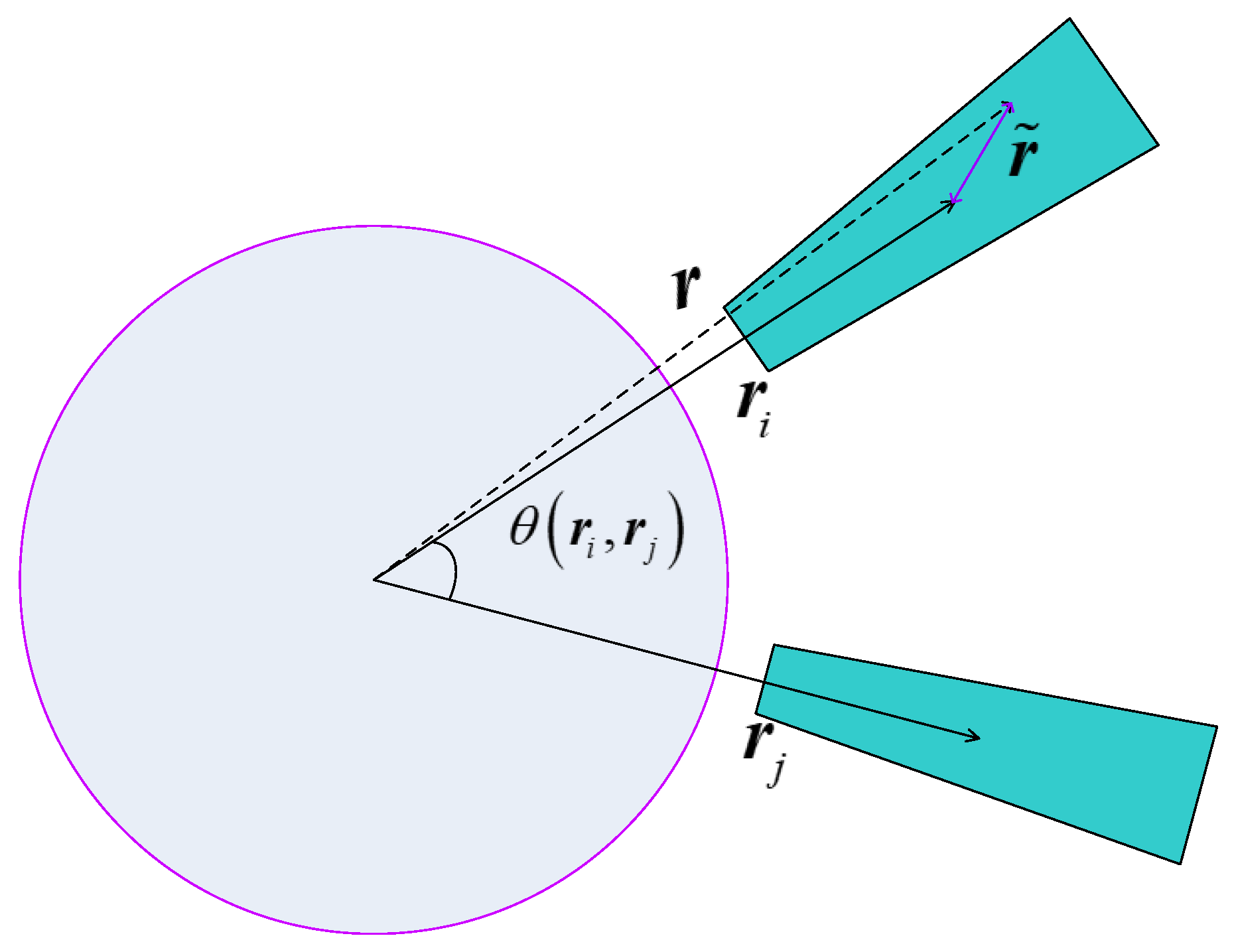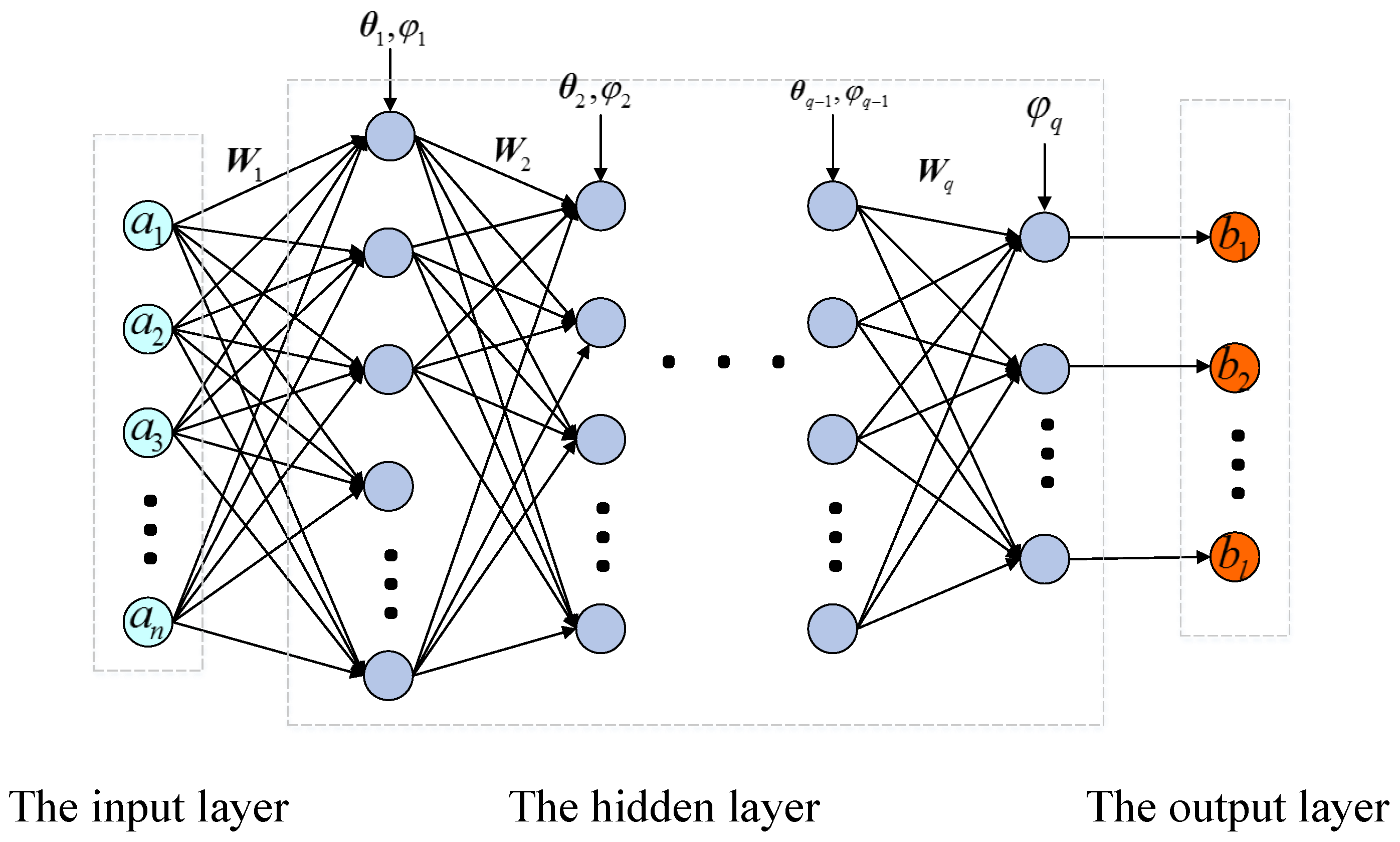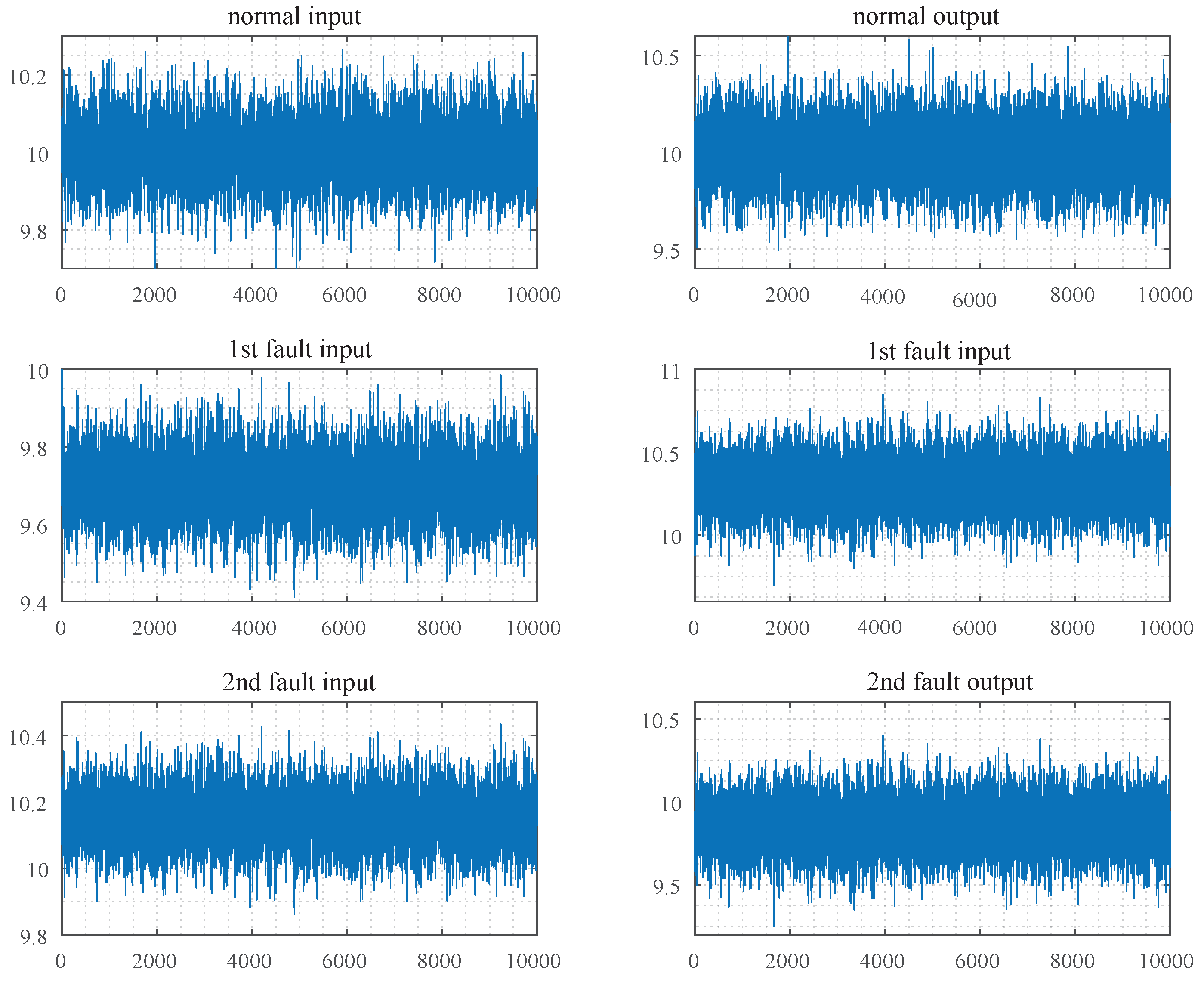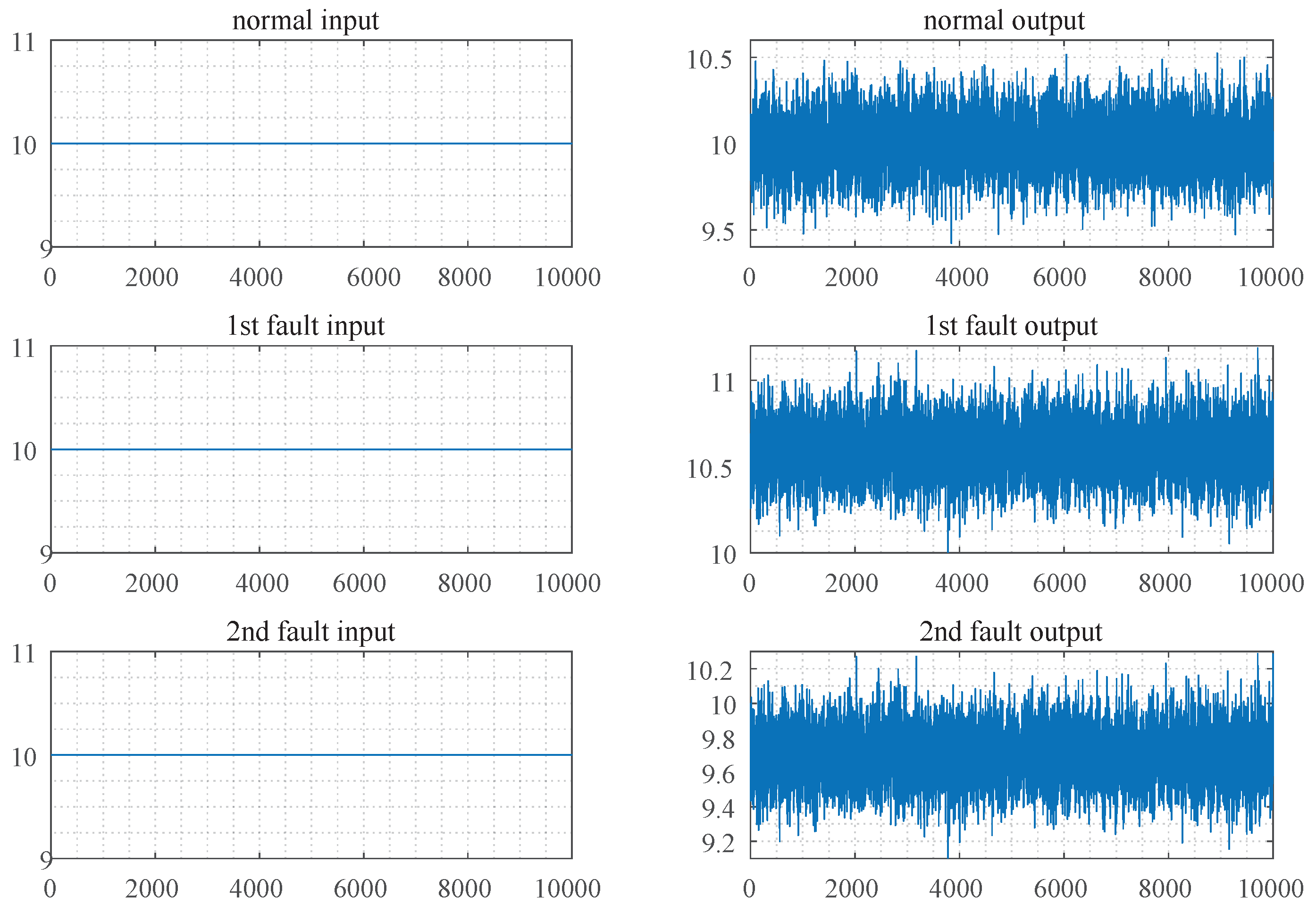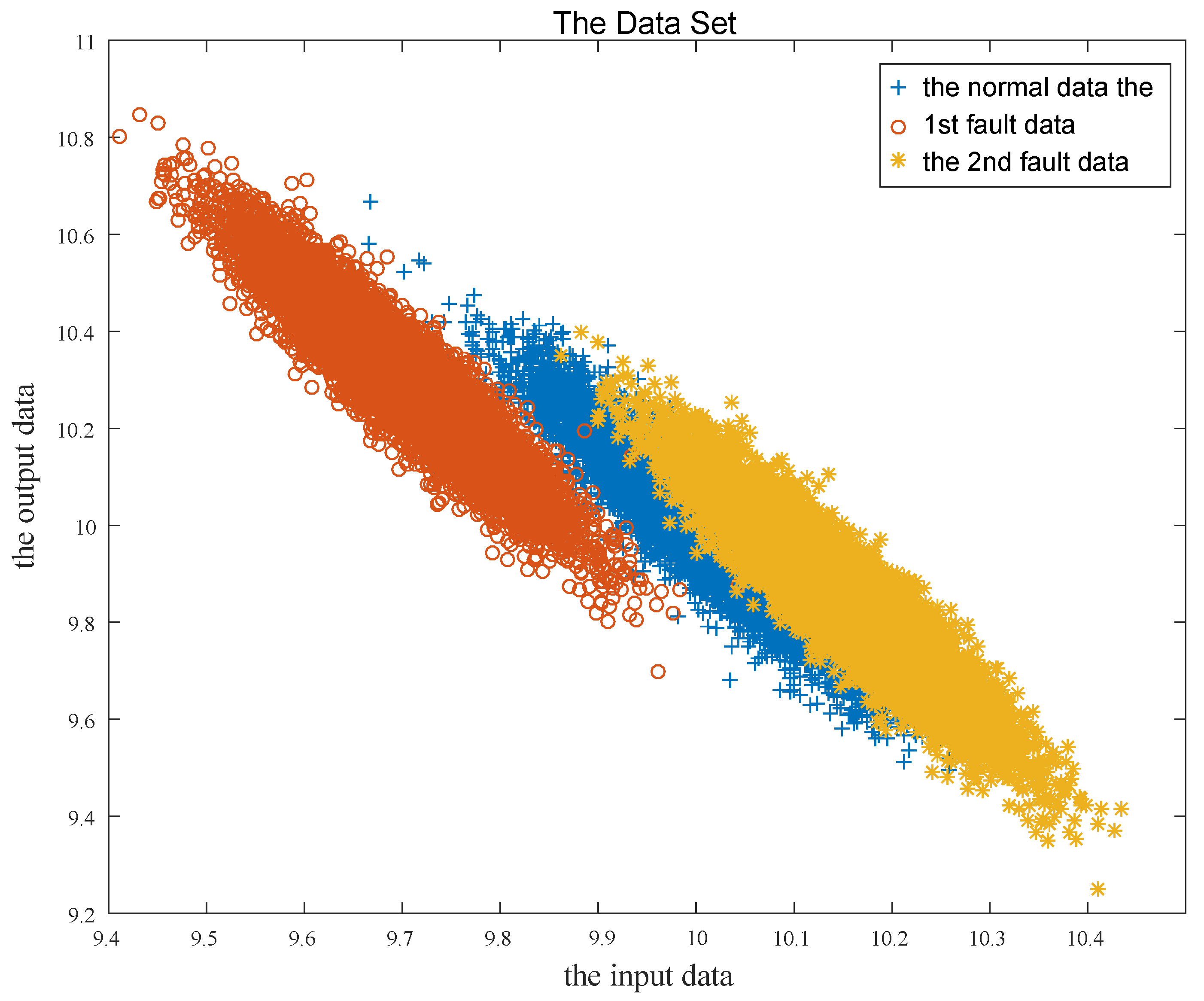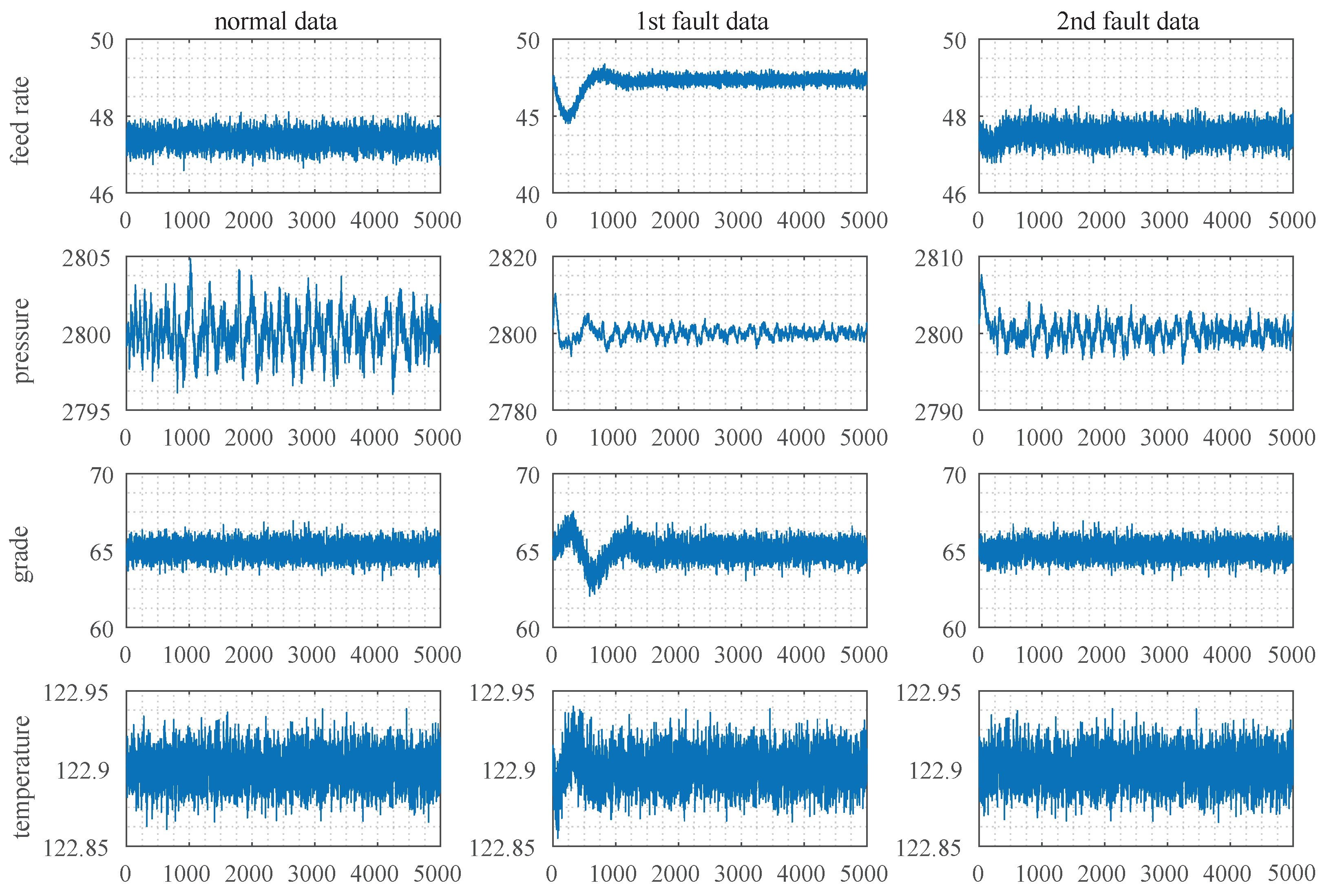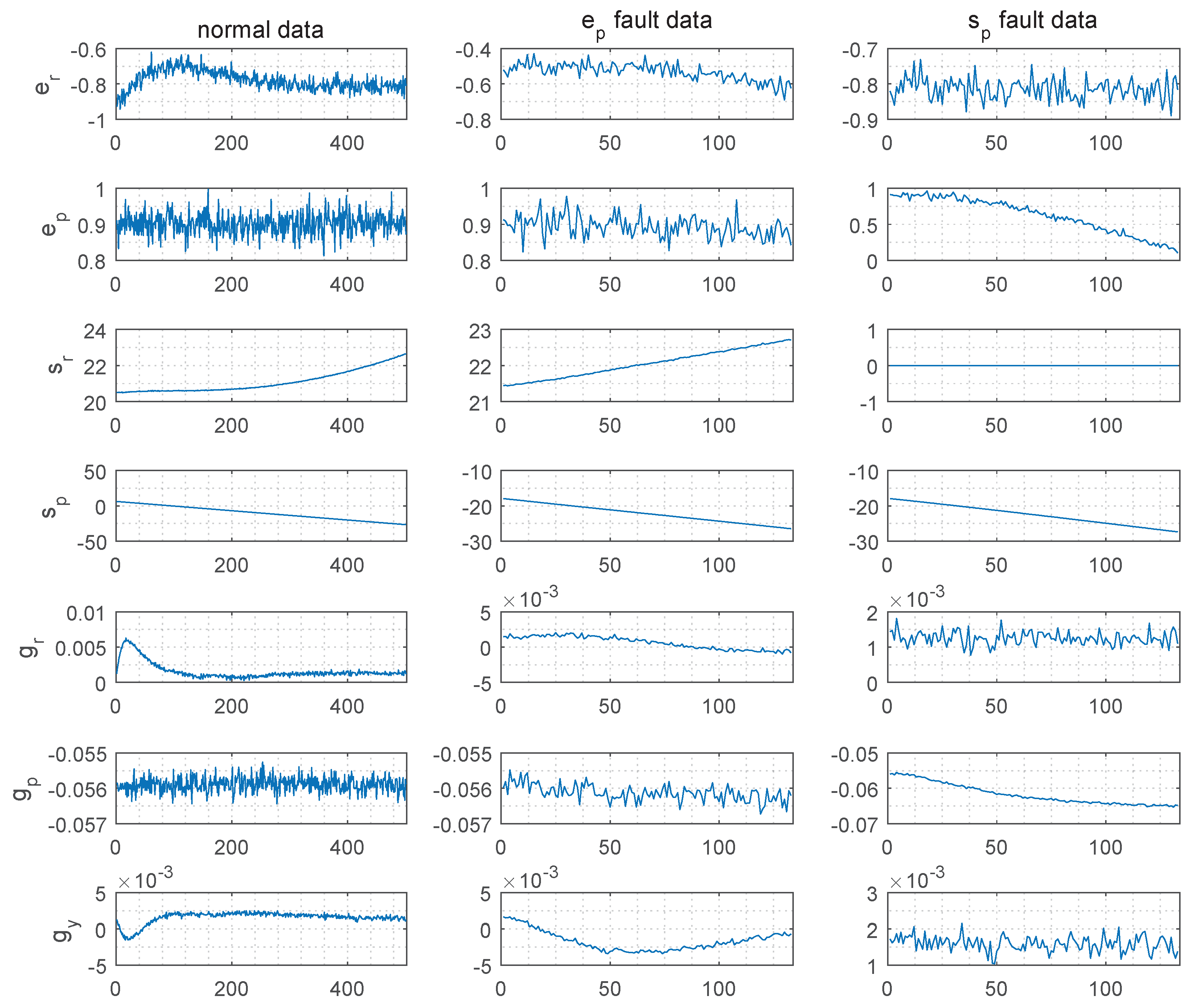1. Introduction
With the development of science and technology, the complexity of the industrial systems has been increasing rapidly. The fault of these complex systems can lead to the decline in product quality and may cause significant property damage or casualties. Therefore, it has become a hot research topic to improve safety and reliability of system operations and to detect or even to identify faults accurately in a timely manner [
1,
2,
3,
4].
In order to achieve the predetermined production goals and meet the stability and the robustness for the industrial systems, the closed-loop control is generally applied [
5,
6]. Through the closed-loop control, the influence of external disturbances and internal noises on the operation of the system is reduced, which makes the system much more robust. At present, a large number of closed control loops have been widely used in the industrial production processes, ranging from mechanical machine control to spacecraft control [
7,
8].
Due to the nature of closed control loops, the performance of fault diagnosis is degraded. The main reasons are as follows [
9]:
(1) The closed control loop usually makes the system more robust to external disturbances and internal noises. When the fault happens in the early stage or the fault amplitude is small, the fault signal will be covered by external control signals, which is difficult for the fault to be detected, resulting in lower fault detection rates;
(2) Due to the inherent feedback adjustment mechanism, a closed-loop control system encourages faults to propagate inside the system, leading to the faults existing in many variables/signals and the faults amplitude becoming smaller, or resulting in the faults characteristics difference being much inapparent and the faults coupling with each other. Such feedback adjustment ability adds to the difficulty for fault identification.
This paper focuses on the second issue in closed-loop control systems. The main aim is to achieve fault identification in closed-loop control systems and improve fault identification performance.
For the structural health monitoring in opto-mechanical systems, the system scanning technology is based on a mechanical rotary mirror and the computational processing of an optoelectronic signal is applied [
10]. The 3D measurement is improved with the multivariate outlier mining and regression feedback. New research performed in the signal and data processing of the 3D measurement system demonstrated the effectiveness of signal processing strategies as a tool for a feedback loop in any measurement system.
For position detection in real life application for structural health monitoring (SHM) by a novel method, support vector machine (SVM) regression was applied to predict measurements errors for accuracy enhancement in optical scanning systems [
11]. The accuracy can be enhanced based on the power spectrum centroid calculation. The SVM regression method is proved that it can be used to increase measurement accuracy for optical scanning systems.
There are a lot of research on fault identification, and the core problem of fault identification lies in the extraction of fault characteristics.
Literature [
12] proposed a fault identification method based on kernel-independent component analysis (KICA). This method extracts the direction information of the faults as the identification characteristics, and then uses the training data to build a model for fault identification. However, as the complexity of closed-loop control systems increases, it becomes more and more difficult to build an accurate model only based on sensor data.
With the development of machine learning research, more and more scholars apply it to the field of fault diagnosis. Literature [
13] was inspired by contribution analysis (CA) method. This method decomposed the distance of k-nearest neighbor (kNN) and used it as the fault characteristics for fault identification. It addressed the shortcomings of traditional CA method in fault identification. However, the method based on the distance judgment could not properly identify the coupled fault modes. A closed-loop control system has high complexity and multiple coupled modes. Hence the above method is not suitable for fault identification in closed-loop control systems.
In non-homogeneous discrete systems, Literature [
14] detected and identified faults in the case of a large number of sensors disturbances. The residual of the observed variable was calculated by estimating the residual characteristics of the state variable, and an appropriate threshold [
7] was selected to compare the difference between the residual and the threshold in each dimension.
Literature [
15] approached the fault detection and identification (FDI) problem for nonlinear systems by using neural networks. The proposed FDI approach employed a recurrent neural network-based observer for detecting, isolating and identifying actuator faults in presence of disturbances and uncertainties in model and sensor measurements. The method used a modified dynamic backpropagation scheme to update the weights of the neural network, and identified the fault characteristics by detecting the updated parameter characteristics of the neural network. However, for closed-loop control systems, different modes may have strong coupling, resulting in parameter changes not meeting the detection and identification requirements.
According to the statement above, most of existing fault identification methods for open-loop systems cannot be directly applied to closed-loop control systems. For closed-loop control systems, the dynamicity of the system poses great challenges in constructing an accurate physical model and determining the model parameters, and the mathematical model established by data fitting may not be malleable or expandable for test data, which leads to the consequence that state vectors or system parameters cannot be estimated accurately. In addition, a closed-loop control system is generally robust to the external disturbances [
16], so that the fault amplitude gradually becomes smaller during fault propagating inside the system; moreover, the fault characteristics difference between different modes can be reduced, and the fault modes could be coupled with each other. Those all add to the difficulty of fault identification for closed-loop control systems.
Based on these observations, in this paper, a fault identification method based on a deep neural network is proposed. The deep neural network [
17] can learn independently, and can obtain the characteristics of each data or fault mode through repeated training. It is expected to obtain a better fault identification performance.
The traditional deep neural network method only trains each set of data. If it is directly applied to a dynamic closed-loop system, the dynamics between each group of data will be neglected [
18,
19]. In addition, the method is proposed to amplify the fault-to-noise ratio and the characteristics difference through applying a sliding window. This paper proposes techniques to improve the deep neural network when the fault magnitude is small and the fault characteristics difference is inapparent in close-loop control systems. The method proposed in this paper has a better identification effect on tagged data. The tagged training data is used for studying with the supervision for each mode, and then the test data is fed into the trained deep neural network for fault mode classification, and then fault identification for closed-loop control system can be realized.
The main contributions of this paper are as follows: Firstly, the propagation mechanism of sensor failure and process fault in closed-loop control systems, and their influence on system output variables are analyzed theoretically. Secondly, a deep neural network fault identification method based on sliding window is proposed, and the advantage of this method for identifying strong coupled modes is demonstrated. Thirdly, the improved deep neural network method is applied to the numerical simulation system, the Tennessee industrial system and the satellite attitude control system to verify fault identification in closed-loop control systems. Finally, the paper also makes contributions for the problem of how to process the data from sensors.
The remainder of this paper is organized as follows: in
Section 2, the propagation mechanism of faults and their influence on output variables in close-loop control systems are analyzed theoretically. In
Section 3, traditional distance-based and angle-based fault identification methods are introduced. In
Section 4, by introducing the deep neural network structure, a deep neural network fault identification method based on sliding window is proposed.
Section 5 presents experiments on the numerical simulation model systems, the Tennessee industrial systems and the satellite attitude control systems, and then results are reported and discussed. Finally, the conclusion is drawn in
Section 6.
4. Deep Neural Network-Based Fault Identification for Closed-Loop Control System
4.1. Deep Neural Network Principle
Neural network is a branch of machine learning, and it has been widely used in various fields. However, the traditional single-layer neural network has a limitation of not meeting the classification requirements of complex systems. To solve this problem, deep neural network was proposed in literature [
23].
Deep neural network is a multi-layer neural network with two or more hidden layers. Compared with the traditional single-layer neural network, it has the ability of enhancing the fitting effect to make classification and to identify complex data. Based on this, it is possible to train and capture data characteristics of each mode better, and to increase the identification rate of different modes.
A deep neural network is determined by data training with certain learning rules, and then the test data is input through the entire neural network to obtain the output vector [
24]. The learning rules are the key in the network establishment process. Here the learning rules are introduced briefly firstly. Deep neural network is a multi-layer perceptron with multiple hidden layers. The network structure is shown in
Figure 2.
Where
is the input layer of the deep neural network,
n is the number of nodes in the input layer,
is the output layer of the deep neural network,
l is the number of nodes in the output layer, in which the input layer and the output layer are different from that in Equation (
1). Here, the input layer is the control input vector and the measurement output vector, and the output layer is the preset tag. In addition,
is the weight matrix,
is the bias terms vector, and
is the activation function and
q is the number of the hidden layers. Each hidden layer computes the activations on condition that the previous layer has been computed. Denote the input vector from the
jth hidden layer (which is also the output vector of the
th hidden layer) as
, and then the output vector of the
jth hidden layer can be computed as follows:
where
and
are the weight matrix and bias vector of the
jth layer, and
is the predefined nonlinear activation function. Some functions used often in the literature include the sigmoid function
, the rectifier function
, and the tanh function
, etc.
In the mode identification region, the softmax activation function is usually used in the last layer of a deep neural network, and its function is as follows:
where
is the weighted sum of the
ith output node,
M is the number of output nodes. Equation (
21) shows a perfect property that the sum of the outputs is 1, i.e.,
where
, and
can be regarded as a probability for identifying the mode with the maximum probability.
In the training process, the weight matrix
and the bias vector
can be updated by using of the gradient descent method, as shown in Equation (
23):
where
is the leaning efficiency,
k is the iteration number,
m is the number of training samples,
is the training error of the
tth training sample, and
is the mean value of
. The training error is determined by the distance between the theoretical tag
and the actual output
of the deep neural network as follows:
If the training error is less than the preset value or the total iteration number reaches the preset number, the training process ends and the network is established.
4.2. Improved Deep Neural Network
At present, deep neural network is widely used in many areas, such as image identification, face identification, etc. Sometimes it can be more accurate than that of artificial identification. However, most of the successful cases are aimed at static data, while data from a closed-loop control system is usually dynamic, that is, the current data is affected by previous data or by a period of time. It is difficult to extract the system characteristics only by a single sample data accurately, which is one of the limitations of the traditional deep neural network.
In this paper, for dynamic data from a closed-loop control system, a sliding window can be set to train data with several moments together. The size of the sliding window can be determined empirically or be judged by the correlation of the training data.
Due to the influence of the closed control loop, external disturbance is weakened. Therefore, it is hard to determine whether the fault has occurred from a single data, and even harder for fault identification. An advantage for setting the sliding window is that the characteristics difference between different modes can be accumulated and increased, and then the fault identification rate can be improved.
Take two fault modes as an example, and assume that
is the measurement output vector of the
ith mode and
is the measurement output vector of the
jth mode in the
kth moment, where
and
are the output vectors without noise of the
ith mode and the
jth mode, respectively. Then let
,
, and
. Assume that the
obeys normal distribution
where
is noise covariance. Then
obeys the distribution as follows:
Since the ratio (i.e.,
) between the characteristics difference and the noise is small, it is easily overwhelmed by the noise. This means it is difficult to identify the fault mode accurately. Accumulate the characteristics difference with the sliding window, and then:
where
N0 is the window length. The characteristics difference
obeys the distribution as follows:
The ratio between the characteristics difference and the noise increases significantly. Therefore, the characteristic difference between two modes can be increased with a sliding window, and the fault identification rate may be increased.
4.3. Fault Identification Step Based on Improved Neural Network
According to the discussions in
Section 2, due to the adjustment function of a closed-loop control system, the coupling effect among different modes becomes stronger, which brings greater difficulty for fault identification. Thus, in
Section 4.2, a fault identification method based on improved deep neural network is proposed. The steps for the proposed fault identification method are given as follows:
Step 1. Preprocess the tagged training data: set an appropriate sliding window size, and then rearrange the data according to the sliding window;
Step 2. Select an appropriate network structure [
25]: preset the number of hidden layers, the node number of the input layer, the output layer and each hidden layer to establish a deep neural network structure;
Step 3. Feed the training data into the deep neural network and select an appropriate activation function for the supervised training process;
Step 4. Feed the test data into the trained deep neural network, and record the output result to identify the test data;
Step 5. Calculate the identification rate of the whole test data and each data mode, respectively, and obtain the relationship between the identification rate and the window size.
